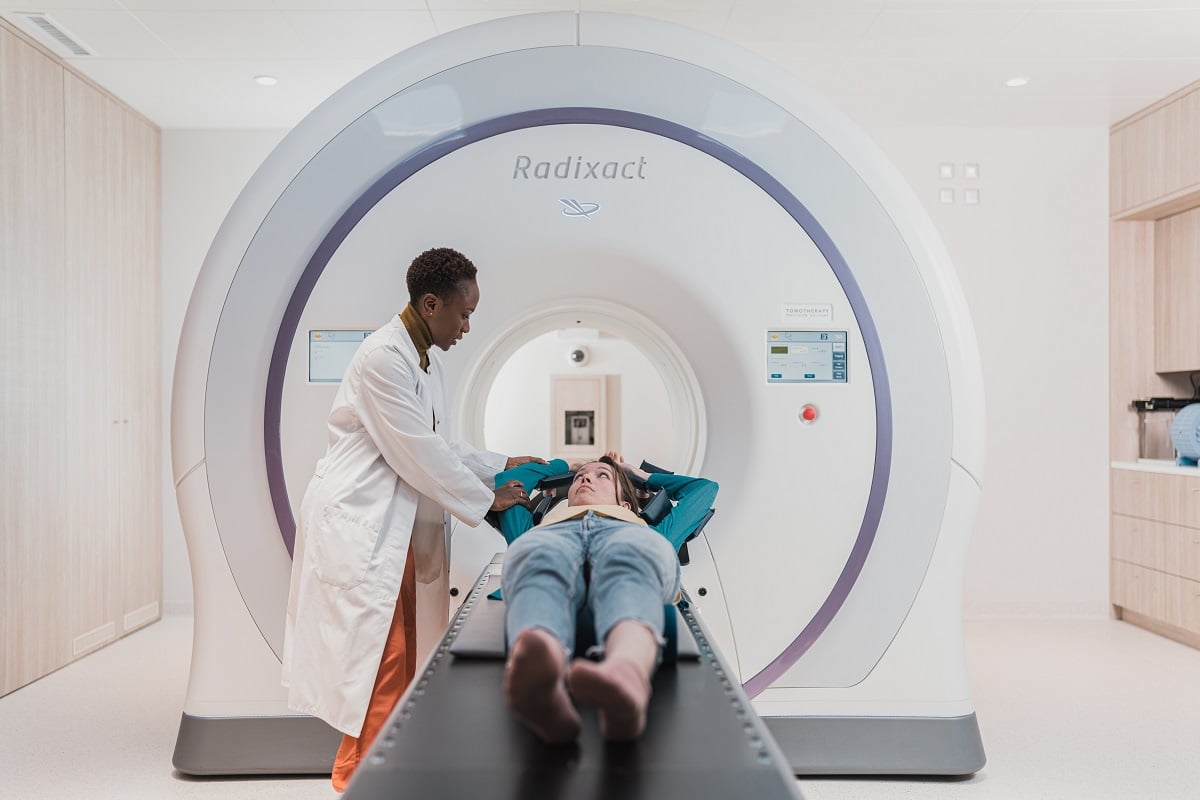
How Long Is The Teas Test?
The TEAS test is for individuals interested in pursuing careers in the nursing or medical field. The TEAS acronym stands for the Test of Essential Academic Skills. This standardized test assesses your compatibility to work as a medical professional in the United States.
The TEAS test focuses on English, language, math, reading, and science sections to determine your eligibility to join the medical professional field. The test is distributed by ATI or Assessment Technologies Institute.
But if you are faced with taking the TEAS test, you might have some questions about the length of the exam, not just the content.
Let’s take a look at how long the exam actually takes.
Table of Contents
How Long Does The TEAS Test Take?
The total amount of time to complete the TEAS test is 209 minutes, or three hours and 29 minutes.
As the TEAS test typically has four sections, you will split this total time across the different sections. Each section has a different time limit that we cover next. You will have a small break in between the second and the third section of the test to stretch, refocus your attention on the test, or go to the bathroom.
ATI TEAS VII Time By Section
The TEAS test undergoes frequent revisions to quiz potential nurses on updated information relating to the medical industry. The most recent version of the TEAS test is TEAS VII. Most nursing facilities will not accept scores from any test lower than the VII. In fact, the previous version, the TEAS VI, is not available for administration any longer.
The TEAS VII has 170 questions, each divided into four sections:
- Reading
- Language
- Math
- Science
Each section is broken into specific time allotments per test-taker.
1. Reading
- 64 minutes
This section gives test-takers a little over an hour to answer 45 questions. Each person has 64 minutes to complete the 45 questions which equate to around a minute and a half for each problem.
For the reading section, you will be presented with passages and texts to analyze. You need to make sure you read thoroughly to answer each question to the best of your ability.
You need to demonstrate your ability to think critically and make proper judgments based on given information. You will also need to make educated guesses based on the context and information given in the text.
Also, note the difference between subjective and objective information. Subjective means information applied personally, and objective means without personal sway or bias.
To ace the reading section, you need to brush up on your ability to read thoroughly, carefully, and quickly. The section has three different kinds of questions that make up the test portion. You have the Key Ideas and Details section with 15 questions.
For this portion, you need to demonstrate your ability to pull the most important information from the passage. You will have to highlight the main message of the passages and also important context to help you answer questions.
Another subsection of questions is framed as the Craft and Structure section. This part has nine questions that focus on the makeup of the passages. You should be able to identify the organization and various functions involved in a paragraph and how they work together to make a complete thought.
The last subsection you will be tested on in the reading portion of the TEAS exam is the Integration of Knowledge and Ideas with 15 questions. This wording might sound confusing but all it refers to is your ability to read a passage, comprehend the passage and compare and contrast the passage with other themes and topics.
In other words, it represents your ability to draw conclusions and use deductive reasoning skills to answer questions about the passage.
It is not simply based on your ability to answer questions from the direct text; rather, it hones more in on your ability to think critically and deduce information.
2. Mathematics
- 54 minutes
The mathematics section gives test-takers 54 minutes to solve 38 questions. You have just under an hour, meaning you have about a minute and a half to solve these equations. Some skills to brush up on include fractions, proportions, word problems, ratios, basic algebra, and units of measurement.
In addition to studying basic algebra, study basic arithmetic and mathematical equations as well.
This section of the test has two different subsections test-takers will be quizzed on. The first section is Numbers and Algebra, with 18 questions. You will have to identify the role of numbers in algebraic equations, including polynomial equations, square roots, and integers.
The second subsection of the mathematics portion of the TEAS test assesses your ability to understand Measurement and Data questions with 16 different questions. You will need to prove your ability to read tables including bar graphs, pie charts, and line graphs.
You need to understand how to read graphs and make inferences based on that information. You also need to demonstrate your ability to justify certain numbers or data based on various terms of measurement.
3. Science
- 63 minutes
This portion of the exam asks users 53 questions within 63 minutes. That boils down to a little over one minute per question. For this section, you need to recall major topics covered in high school biology, including body parts and functions of major systems.
You need to know and understand the scientific method, understand how to use deductive reasoning in a scientific setting, and understand chemistry and physics functions.
The science portion of the ATI TEAS test has four different kinds of questions asked during the assessment. Let’s break each one of them down. The first subsection is Human anatomy and physiology, complete with 18 questions.
Generally, anatomy refers to various structures in the human body, such as organs, systems, and extremities, such as skin or nails. Anatomy is the physical and chemical makeup of a body, and physiology refers to how the physical or chemical makeup functions.
So, physiology explains why certain body parts work the way that they do and how the functions help the body and keep it operating. Some questions will focus on organism functions, organ functions, cell functions, and biomolecule functions in the human body.
The next subsection of the science portion of the TEAS test is the biology portion. Made up of nine different questions, the biology portion focuses on the overall study of life. More specifically, growth and evolution in organisms.
Since you are taking a test to become a medical professional, the biology section will focus on human biology. Make sure you can identify body parts and functions (similar to anatomy and physiology) as well as evolutionary vocabulary, scientists, and theories.
Factor in ecology, genetics, and sociocultural information into your studies as well.
Chemistry is a subsection complete with nine questions about substance identification, makeup, and the periodic table. You have to understand what makes up certain compositions, the transfer of energy, and how certain substances can affect a human.
This is huge when dealing with medications. To effectively treat patients with medications, you need to understand how different compounds can affect their health or symptoms.
The last subsection of the science portion of the TEAS test is scientific reasoning. This section tests you on one of the fundamental approaches to science. Scientific reasoning measures the ability to draw conclusions, consolidate data, test hypotheses, and think critically about information in the scientific realm.
This portion asks nine questions about the problem-solving method known as scientific reasoning. Make sure you know how to draw conclusions based on data and digest information to make logical inferences.
4. English and Language Usage
- 28 minutes
This section measures your ability to understand the functions and rules of the English language. You have 28 minutes to answer 37 questions, so around three-quarters of a minute per question; This portion of the test asks questions about grammatical rules, sentence structure, punctuation, spelling, and vocabulary.
You will read several passages or sentences, and you must seek out the issues in the sentences and the best order of the sentences for the passage. You must also understand how prefixes, suffixes, connotations, and syntax affect the meaning of a sentence.
This part of the ATI TEAS test is broken down into three subsections. Conventions of Standard English quizzes you with 12 questions on the usage of the English language with regard to punctuation, grammar, and sentence structure.
The next section has 11 questions about the Knowledge of Language. This section focuses on the different rules of the English language. This section asks more in-depth questions on grammar than in the above-mentioned section.
The final subsection of the English and Language Usage portion of the TEAS test is the Using Language and Vocabulary section. With ten different questions, this section asks test-takers about the meaning of words and functions of words in relation to sentence placement.
For this section, make sure you understand synonyms, antonyms, and context clues to determine the best word to answer the questions. You should also refresh yourself on the makeup of sentences and the function of verbs, adjectives, nouns, predicates, and subjects. Knowing how to construct a legitimate sentence will ensure your success in this subsection.
Wrapping Up
Before taking the three-and-a-half-hour test, you can use Test-Prep Online’s study guides and practice tests to get a feel for the real test before registering for the actual assessment. Good luck!
Sarah is an accomplished educator, researcher and author in the field of testing and assessment. She has worked with various educational institutions and organisations to develop innovative evaluation methods and enhance student learning. Sarah has published numerous articles and books on assessment and learning. Her passion for promoting equity and fairness in the education system fuels her commitment to sharing insights and best practices with educators and policymakers around the world.





